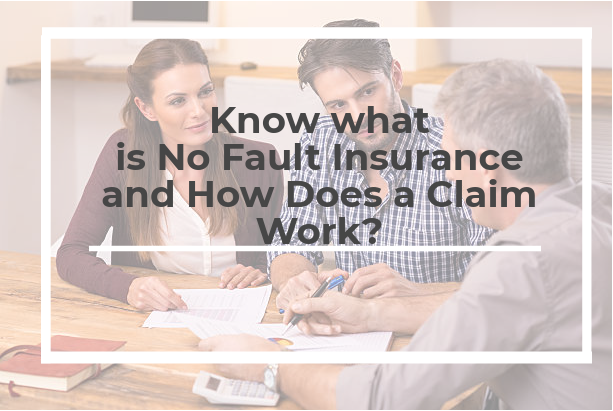Disclaimer: This article should not be treated as legal advice. It’s recommended that readers still consult legal counsel and contact a lawyer should they have any concerns regarding this topic.

Insurance can be an extremely helpful asset when it comes to securing our finances, as tackling the right kind of insurance for the right scenario can greatly aid us in times of need. Unfortunately, not a lot of people appreciate the idea of numbers as they can really tend to be confusing. However, there might be certain kinds of insurance that can be a great asset to you, and you may want to learn about them. An example of this is No Fault Insurance. Before proceeding, however, please do remember that to know what is No Fault Insurance and how a claim for it works is not the full extent of the information you need to know about the subject. It’s still wise to get the counsel of a lawyer and a financial professional in order to fully understand the extent of these claims and how these forms of insurance can benefit you.
What’s No Fault Insurance?
No Fault Insurance signifies that an insurer will pay some of the bills required or lost earnings should you get in an accident. The catch is, they pay this regardless of whoever was at fault for the incident in question. In its most basic sense, these claims are made through what is called “personal injury protection” or the PIP provisions of an insurance policy.
● No Fault Insurance coverage is mandatory in states that allow no fault insurances. These include Utah, Pennsylvania, Oregon, North Dakota, New York, New Jersey, Minnesota, Michigan, Massachusetts, Maryland, Kentucky, Kansas, Hawaii, Florida, Delaware, and Arkansas.
● Of course, the rules of No Fault Insurance may differ from the state in question. Only some states, District of Columbia, New Hampshire, South Dakota, Texas, Virginia, Washington, and Wisconsin offer the option for owners to not make use of the No Fault Insurance when getting a car.
The Basics
No Fault Insurance is something you create with your automobile insurer that can make them help you cover payment of bills and damagers should you be in an accident. Do remember however that No Fault Insurance has a coverage limit, and you have to buy the minimum coverage to benefit. You also have the option to purchase additional types of coverage to increase the kinds of things your PIP can cover.
● However, a key component in this process is to make sure you will not make any claims of pain and suffering against your car insurance coverage. You are only to do this to the at-fault driver if your bills have reached a certain amount, and especially if your injuries are deemed to be serious. These factors are better discussed with an attorney for elaboration.
Coverage
Typical No Fault coverages can be paid out in specific conditions, but in a general sense include:
● If you’ve sustained injuries in an accident that is caused by another driver. In this situation, the at-fault driver may help reimburse expenses on your end through his/her bodily injury liability coverage.
● If you’ve sustained injuries in an accident you yourself have caused, your medical payments coverage may even help pay some of the medical expenses.
This also means No Fault Insurance might not cover certain instances, which include:
● If you’ve sustained damages to your vehicle, your own collision coverage may help pay for the expenses.
● If you’ve caused damage to other people’s property, your own property damage liability coverage may help pay for this.
● This also means that since there are different No Fault Insurance rules in every state, it’s important to understand how some of these work for the specific state you live in.
Cooperation is a Must

Interestingly, it’s important to consider that filing a No Fault Insurance claim means having to follow different sets of rules with your insurer. For instance, we commonly have an idea that we shouldn’t do certain things with an insurer, such as offer recorded statements. In a No Fault claim, however, laws generally require us to communicate with the insurer.
● Policies differ depending on the specifics of the No Claim Insurance, but these steps may for instance include giving your permission to have a recorded statement, having to be checked by a medical professional that the company has selected, and others. Failure to comply with these certain conditions may have the insurer deny your claim.
No Fault Insurance can be an extremely great asset for you should you know how to use it. This is especially true if you know how its claims work and when best to file for them. It will be much easier for you to tackle No Fault Insurance if you know the questions to ask and wonder about, especially when talking with your legal counsel. Remember, before filing any claims, please make sure to consult with your legal counsel first in order to identify the full extent of the advantages and disadvantages this insurance can give you.
Author Bio
Vicki Haskett
Vicki is a law writing enthusiast who’s had over 25 years of experience in her field. She enjoys sharing her experiences with those who want to learn more about the legal world. In her spare time she spends quality time with her family and friends.







